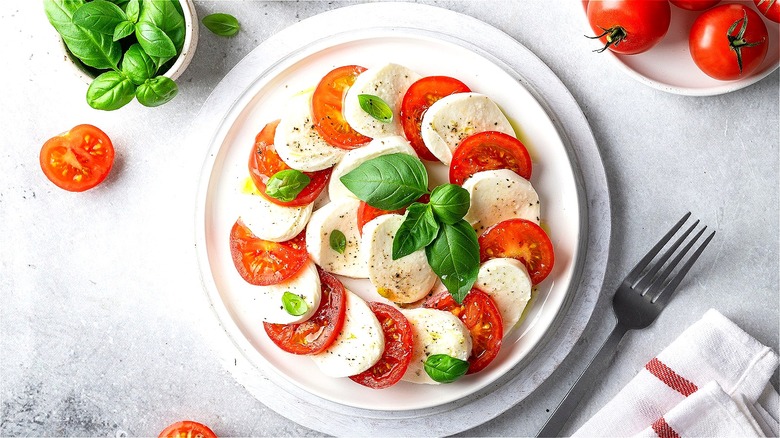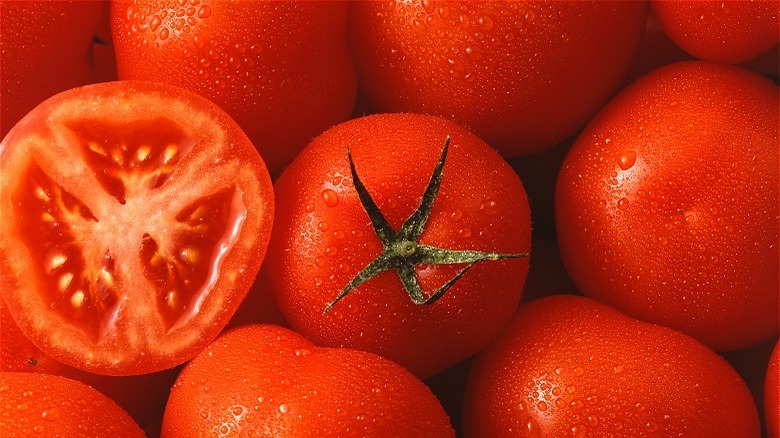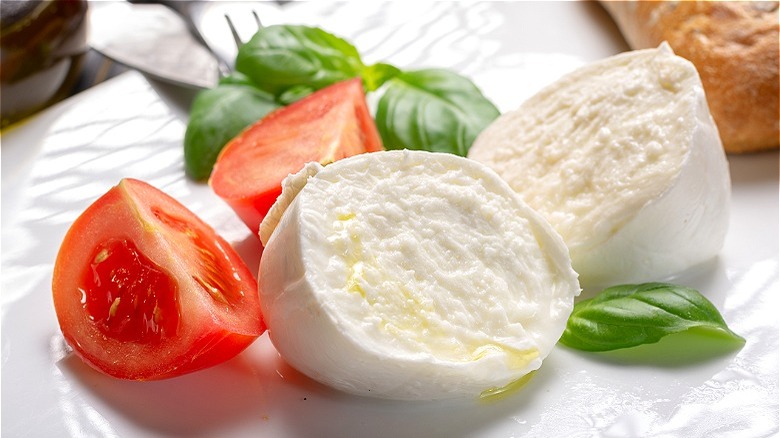The Major Mistake To Avoid When Making Caprese Salads This Summer
There are specific snacks and meals that foodies leave reserved for those hot summer months. Besides hand-crafting old-fashioned peach cobbler with freshly picked peaches and watermelon and cucumber salad with hand-picked watermelon from the farmers market, traditional Caprese salad shines in all its simplistic glory. You may frequently turn to this culturally rich salad when dining alone or entertaining friends, as Caprese salad only calls for tomatoes, mozzarella, basil, and olive oil. However, with such a small ingredient list, choosing the freshest food for this Italian salad means more than you might guess.
The biggest potential mistake in making Caprese salad is assembling the dish with unripe tomatoes purchased out of season. Caprese salad is fairly easy to make, but this simple dish is mostly enjoyed in the summer so foodies can enjoy their share of vibrant, seasonally ripe tomatoes.
A Caprese salad in the fall or winter may still be somewhat tasty, but there's nothing like sitting down to a plate of sliced mozzarella, freshly picked vine-ripened tomatoes, and newly harvested basil.
Tips for handling tomatoes when making Caprese salad
Now that you know fresh, ripe tomatoes are the key to avoiding a bland Caprese salad, there are a few things to keep in mind when preparing these bright-red beauties. The only place you should be storing fresh tomatoes is on your counter, away from direct sunlight. While you may be able to extend the shelf life of your tomatoes by a handful of days by storing them in the refrigerator, there is still great debate among scientists and foodies as to whether or not refrigeration affects tomatoes' aroma and flavor compounds. If you plan on assembling your Caprese salad in a day or two, room-temperature storage is recommended.
When choosing the right tomatoes for your salad, Beefsteak or Umberto varieties are often recommended. They're usually large and juicy when in season and prove to be a proportionate match for freshly sliced mozzarella.
While selecting juicy, in-season tomatoes is essential in creating a delicious summer salad, be mindful of all that tomato juice. Before constructing your Caprese salad, slice tomatoes and set them aside to dry so your salad components aren't left sitting in a pool of liquid. Seasonal, ripe tomatoes are essential in crafting a tasty Caprese salad, but the other suggested ingredients should also be as fresh as possible when preparing this summertime mainstay.
The quality of each ingredient matters when making Caprese salad at home
Tomatoes aside, the quality of your mozzarella, basil, and olive oil is also of equal importance when hand-crafting this one-of-a-kind seasonal salad. Using soft, fresh mozzarella with minimal ingredients assures the quality of your cheese. You may be surprised to discover the secret to using fresh mozzarella when making pizza is the same protocol when making a traditional Caprese salad.
While you don't want to remove all the creamy milk from your mozzarella slices, you do want them partially dry to avoid an overly wet salad. As far as varieties go, fior de latte or Buffalo mozzarella are some of the finest assortments. For finishing touches, try and choose basil with smaller leaves for a more pronounced flavor. The Genovese or sweet basil variety works well for Caprese salad, as the subtle sweetness of the leaves counteracts the distinct flavors of ripe tomatoes and slightly salty mozzarella cheese.
Lastly, choose high-quality olive oil to finish off this traditional Italian dish. You should always strive to select extra-virgin varieties that have been cold-pressed. Pure varieties tend to present distinct, original flavors. Of course, you can always get creative with your salad assortment and make a variety that's a little more unique, such as strawberry-avocado Caprese salad. However, if you're committed to making the original Caprese salad, always select the freshest ingredients and include juicy, in-season tomatoes.


